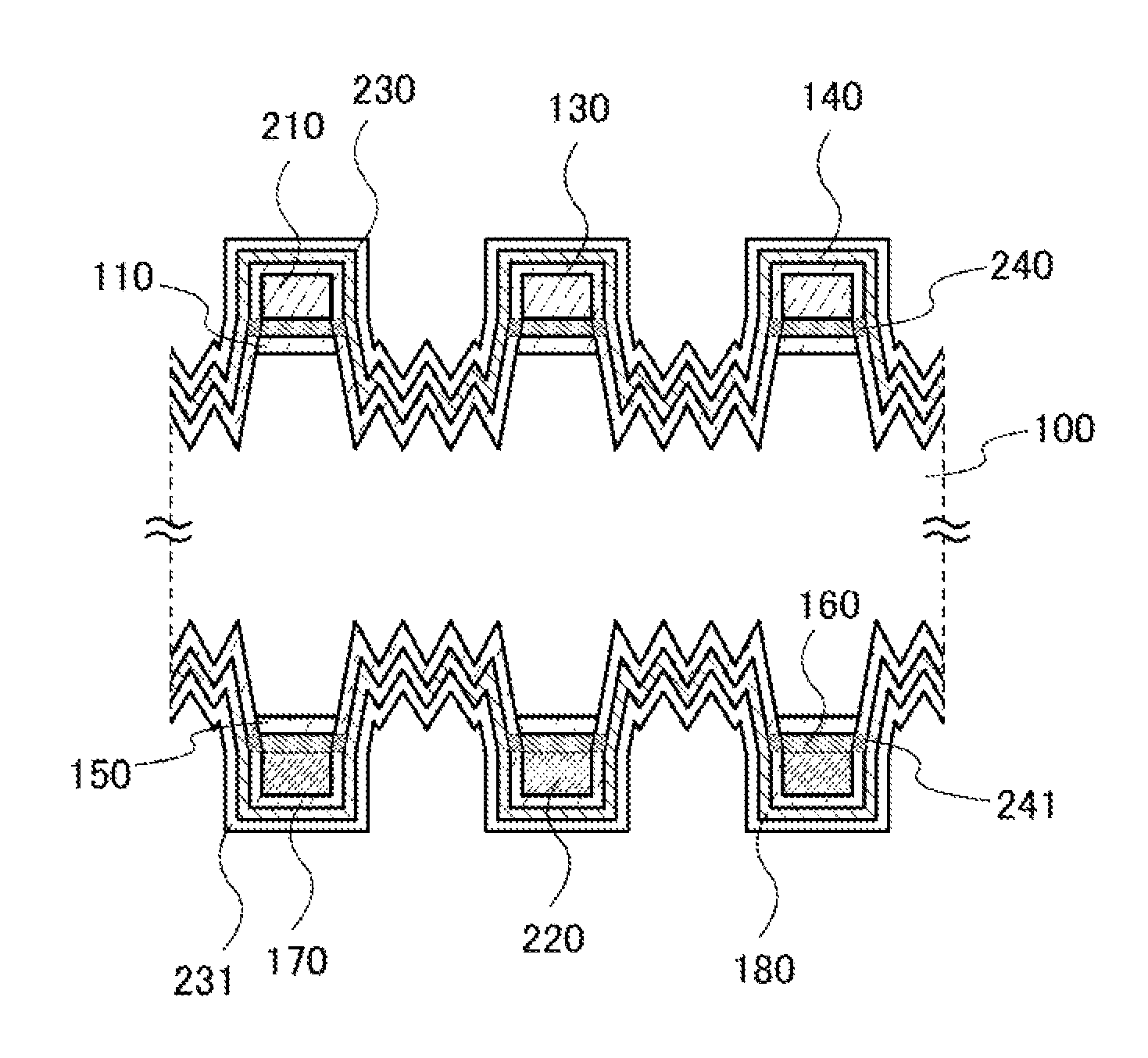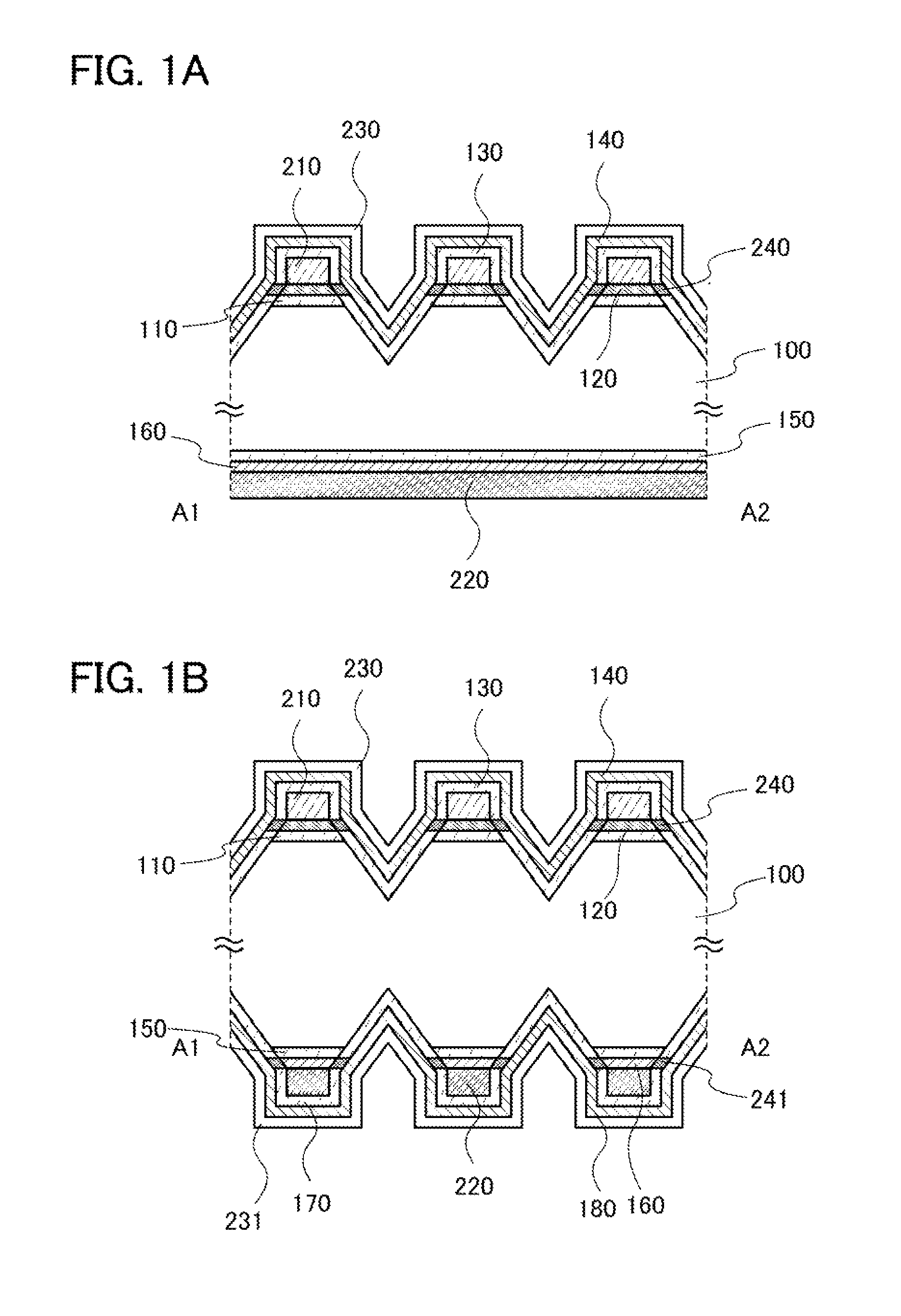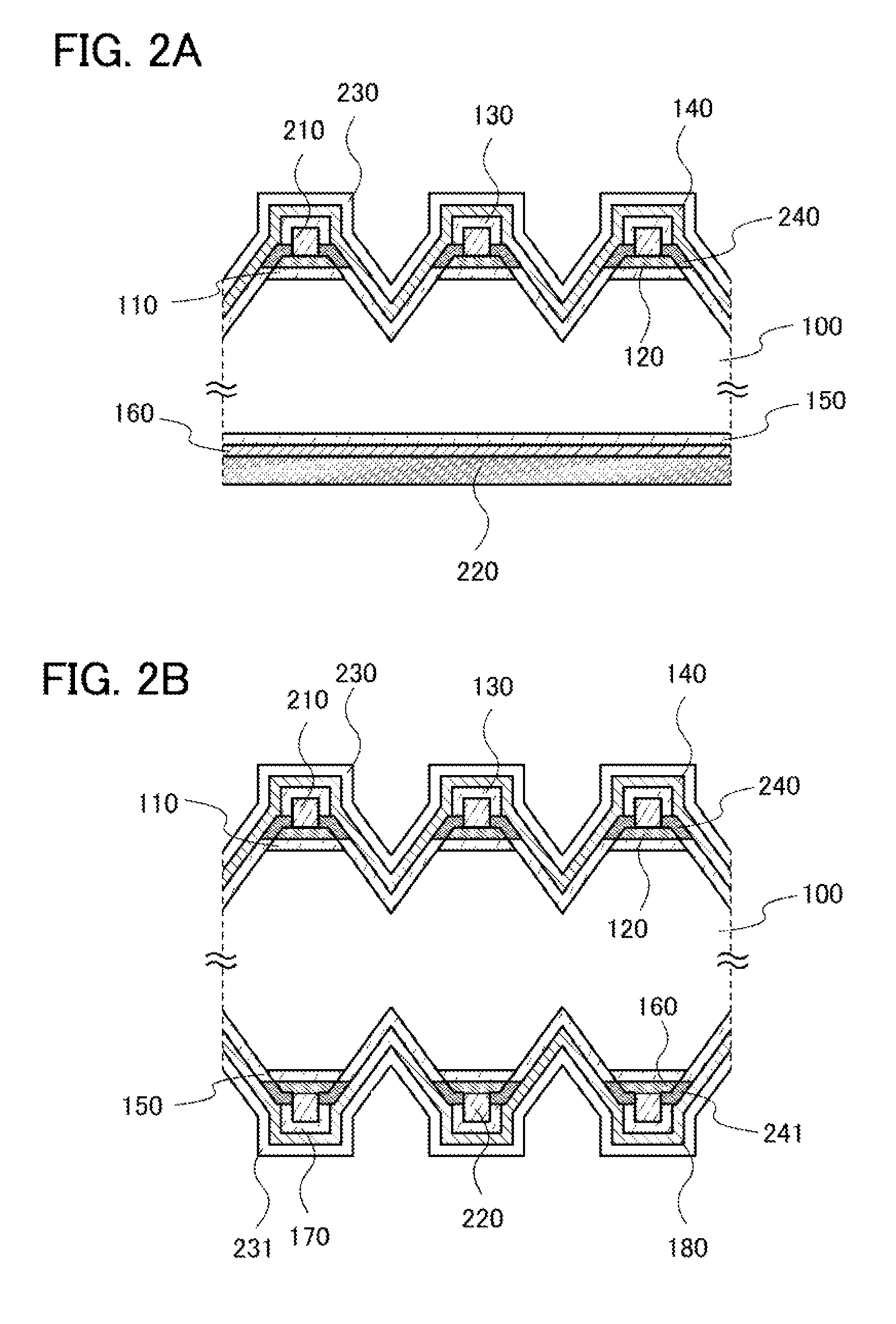Photoelectric conversion device
a conversion device and photoelectric technology, applied in the direction of semiconductor devices, basic electric elements, electrical equipment, etc., can solve the problems of inferior effect to insulating films such as oxide films or nitride films, insufficient conductivity in horizontal directions, light absorption loss, etc., to reduce the effect of carrier recombination in the junction region, the effect of reducing the influence and improving the electric characteristics
- Summary
- Abstract
- Description
- Claims
- Application Information
AI Technical Summary
Benefits of technology
Problems solved by technology
Method used
Image
Examples
Embodiment Construction
[0037]Hereinafter, embodiments of the present invention will be described in detail with reference to the accompanying drawings. However, the present invention is not limited to the description below, and it is easily understood by those skilled in the art that modes and details disclosed herein can be modified in various ways without departing from the spirit and the scope of the present invention. Therefore, the present invention is not construed as being limited to description of the embodiments. In the drawings for explaining the embodiments, the same portions or portions having similar functions are denoted by the same reference numerals, and description of such portions is not repeated in some cases.
[0038]In this embodiment, a photoelectric conversion device according to one embodiment of the present invention, and a manufacturing method thereof will be described.
[0039]FIGS. 1A and 1B are cross-sectional views each illustrating a photoelectric conversion device according to on...
PUM
 Login to View More
Login to View More Abstract
Description
Claims
Application Information
 Login to View More
Login to View More - R&D
- Intellectual Property
- Life Sciences
- Materials
- Tech Scout
- Unparalleled Data Quality
- Higher Quality Content
- 60% Fewer Hallucinations
Browse by: Latest US Patents, China's latest patents, Technical Efficacy Thesaurus, Application Domain, Technology Topic, Popular Technical Reports.
© 2025 PatSnap. All rights reserved.Legal|Privacy policy|Modern Slavery Act Transparency Statement|Sitemap|About US| Contact US: help@patsnap.com



